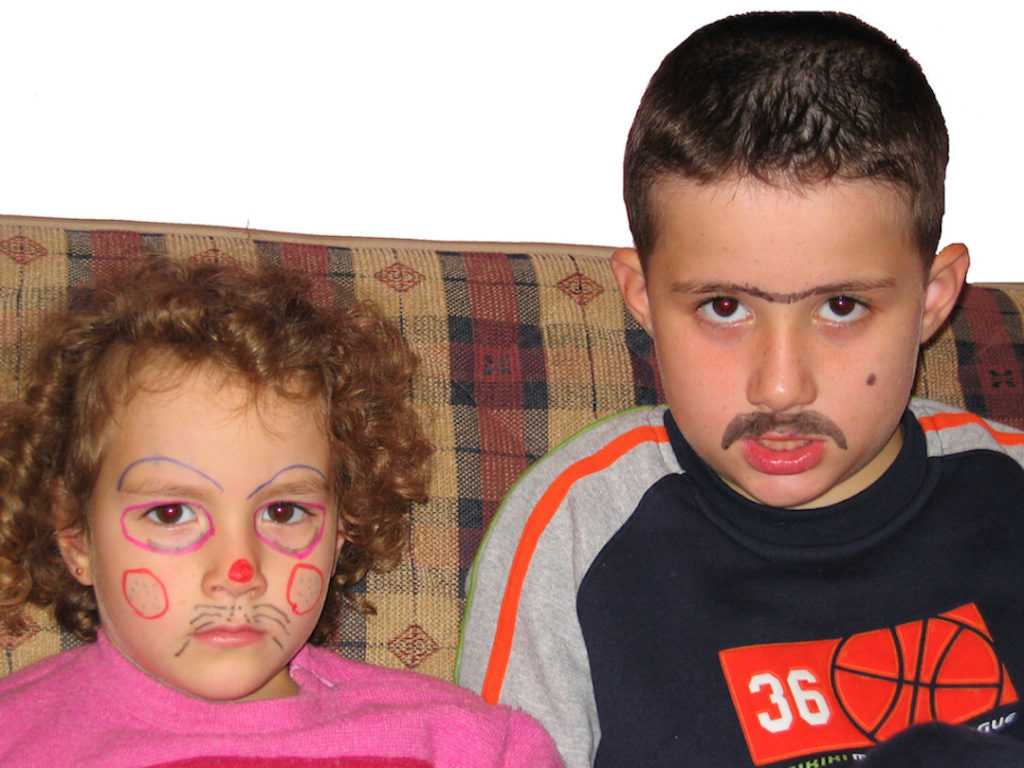

Dr. Mica Gonzalez
The Way of the Trickster Parent
The coyote is a powerful symbol in many Native American traditions, representing, among other things, the wisdom of the trickster. But I can’t pretend to have any real knowledge of or any specific connection to Native culture. Rather, this post is born out of a single, brief experience I had several years ago while training in a form of group work known as Council.
Gigi, the Coyote
Here’s the scene: It’s summertime in bucolic southern California. I’m sitting under a hundreds-of-years-old oak tree in a circle with a group of strangers, and we’ve been talking all…day…long. We’ve just met but there’s already been conflicts, resolutions, and touching personal stories. Folks are looking done. Just as our time is winding down, another man says something that bothers me, and I open it right back up. Before I could get too far, however, one of the group leaders, Gigi Coyle, springs into action. She gets on all fours and starts crawling around the circle, howling like a coyote. No eye contact. No verbal direction. Just a grown woman skillfully cutting through an untimely and counterproductive exchange by embodying an animal. Everyone, including me, laughed and quickly got the message before closing the circle and saying goodnight.
What does this have to do with parenting young children, you ask? Quite a bit, actually. See, Gigi had insight. She was reading the group and knew that it was time to close up shop. But the way she chose to do that avoided the need for a detailed explanation and prevented people’s feelings from getting hurt.
“Much to grown-ups’ dismay, their youngsters frequently don’t respond well to things like, ‘Just stop crying. You’re blowing it out of proportion’ or ‘Cheer up, hon. You’ve got to look on the bright side.'”
Parents, when faced with their children’s tantrums, run-of-the-mill defiance, or even grumpiness, often default to logical and/or wordy explanations, that is, when they’re able to avoid a more emotional response. Much to grown-ups’ dismay, their youngsters frequently don’t respond well to things like, “Just stop crying. You’re blowing it out of proportion” or “Cheer up, hon. You’ve got to look on the bright side.”
Trickster Tools
Parents can be coyotes, too. They can find indirect methods of handling emotional situations. Here are a few examples:
- Make jokes. A 4 year-old gets peeved because there’s not enough milk for his cereal and makes an angry face at his mom. She responds by grabbing the empty milk carton and saying, “You dumb milk! You let yourself get swallowed by this whole family and didn’t save any of yourself for David’s cereal. I’m so mad at you! [Turning back to her son] David, let’s get rid of this stinky carton and pick up a fresher, fuller one at the store when I get you from preschool.” David’s grimace turns into a barely detectable smirk, and he nods yes.
- Sing or use music. In spite of being bored to tears by the repetition, Jerry always plays the same song whenever he changes 18-month-old Kayden’s diaper because without it his restless toddler will find a way to squirm, kick, or buck his way off the table. And lately, Ann Marie has gotten in the habit of singing her way through everyday transitions (e.g., moving the kids from bath to bed), which have become harder for her toddler and kindergartner since the parents separated.
- Act like an animal. The 5 year-old twins, Carlos and Angela, are squabbling again over who gets to play games on the tablet. It hasn’t gotten physical yet but could at any moment. Grandma sees the situation unfolding and decides to try something new. She gets close to the kids, right at eye level and barks like a dog. She mirrors their anger because she wants them to see how they’re behaving, but mostly she just wants them to pause for a minute. After a moment of silliness she guides them to take turns.
“…the essential message is this: ‘Hey, kid. Cut that out. I’ve got a better way of handling this.'”
The astute reader could look at these examples and draw the conclusion that trickster strategies are too permissive. Some folks might think that these tools don’t make it clear enough to the children that the behavior in question is unacceptable. A firmer, more authoritative response is in order. While I agree that measured shows of parental strength are often a good choice, experience has taught me that there’s more than one way to skin a cat. In the examples above, the essential message is this: “Hey, kid. Cut that out. I’ve got a better way of handling this.” Parental tricksterism offers some ways of communicating this important message without the escalation of conflict or the collateral damage. It can be especially useful for families who feel stuck in the tantrum-punishment-grief cycle.
If you want to try to be a coyote, do so with kindness in your heart and an experimental attitude. And be willing to apologize and reset if you miss the mark and invalidate their feelings instead.
